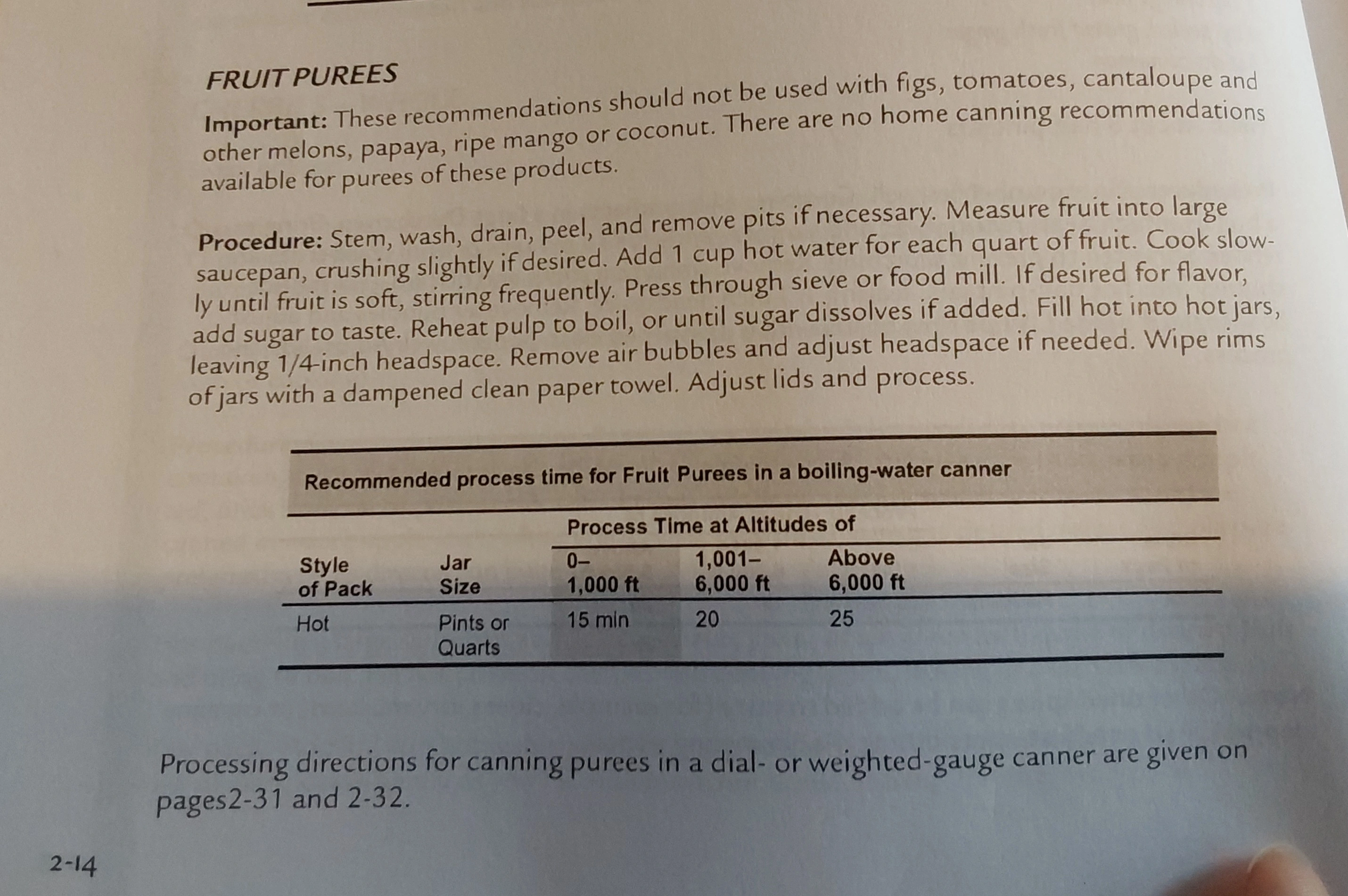Mashed fruits are a puree. From the USDA canning guide (which I think is available free online):

Canning and preserving food. Includes dehydrating, freeze-drying, etc.
Mashed fruits are a puree. From the USDA canning guide (which I think is available free online):

Yes! This is exactly what I was thinking! Thank you! I just went to the website and read through the instructions. Hopefully the puree turns out decent.
Oh excellent! One of the hardest part of a new hobby is learning all the terminology. I'll go read about purees right now. Thank you!
If you want something that still tastes fresh and sweet, you can freeze your jars. Freezer jam usually uses pectin and sugar because that's how you get jam texture. Pureed strawberries are really runny. You should also anticipate losing some of the sweetness of the strawberries, unless you can flash freeze them somehow. But you would lose that if you went the fermentation route anyway.
As written, this is a pretty terrible idea, though. You still need to do the sanitation process on the jars, and the prospect of getting kill-you-microbe soup is high without involving a preservative of some kind or a yeast to nudge the fermentation the right way. Strawberries are high in water and moderate in sugar, which makes them really hospitable to bacteria and fungus. Mold, yuck.
So I take it using a pressure canner is more of an attempt at creating an internally sterile environment rather than a guarantee? I wouldn't mind freezing jars after canning, we've got a chest freezer that's going to need some filling up in the near future.
Obviously I'm way ahead of myself here, but I'd like to get to the point where I can come up with reasonable recipes on my own instead of following instructions and trying to imagine why something is a terrible idea is part of familiarizing myself with the nuances of canning.
Someone else already touched on the pressure canner in another comment.
Sometimes there are areas where you need to follow the rules and guidelines for safety reasons and shouldn't improvise, and canning is one of them. It's kind of like how if you get a prescription from your doctor, you follow the directions and don't get creative. If you don't follow the directions, you might die.
The USDA has a big book called The Complete Guide to Home Canning. You need to get the most recent version. The last time it was revised was 2015, but they do revise the safety guidelines every so often, so you shouldn't use a copy from the 1980s or anything like that. This is a comprehensive book based on science and it should be able to answer most of your questions. The Ball Complete Book of Home Preserving is good too and has more recipes, but I would probably give preference to the USDA. The USDA website has a ton of resources too, but the book is good to have on hand.
If you just put the fruit in the jar and do nothing you might end up with a fruit wine mash if you are lucky or a pile of rotten fruit if you are not. (This is assuming that you've let air escape the jar every day. If not you jar would have exploded in your cellar)
This is the first kind of fermentation. The one you are the most likely to get. There is other kind of fermentation like kombucha or lacto-fermentation that you can get, you can "guide" by adding salt or some kind of yeast to get the fermentation you want.
You can also add alcohol to jar to preserve the fruit. This is how you get amaretto cherries for example.
Of course there is the option to add sugar but you already pushed this idea away.
Last option is to canned it to sterilize it at high temperature but it's not really an area I've explored much.
Oh, yeah, sorry I wasn't very clear with my idea. I figured I'd throw them in a clean jar and sterilize it the same way you would with regular canned goods. The safest way would be to use a pressure canner, as far as I know. I figure if we're certain it's sterile then everything else about the interior is all about preferred taste and fighting molecular degradation.
You would have to pressure can this. Water bath canning would not kill the real nasties like botulism. The sugar or vinegar in jams and pickles respectively prevent those germs from growing out of control which is critical. There is virtually no realistic way to ensure all your equipment is sterile enough to guarantee you will not end up with contamination. It would be a huge risk.
Only pressure canning would actually kill them because the temp gets high enough. Water bath canning is not sufficient.
I think water bath can be enough if the pH is below 4.6.
Below this pH the botulism cannot survive.
According to this chart pH values of common foods and ingredients the fruits you are talking about have a pH well below 4.6 so in theory it could work in a water bath.
However you need to be very careful about what you are doing, unlike fermentation or preserving in sugar, canning can kill you if not done properly. It's generally not advised to can food without strictly following an approved recipe.
Yes but what OP is asking woudlnt reach those pH values.